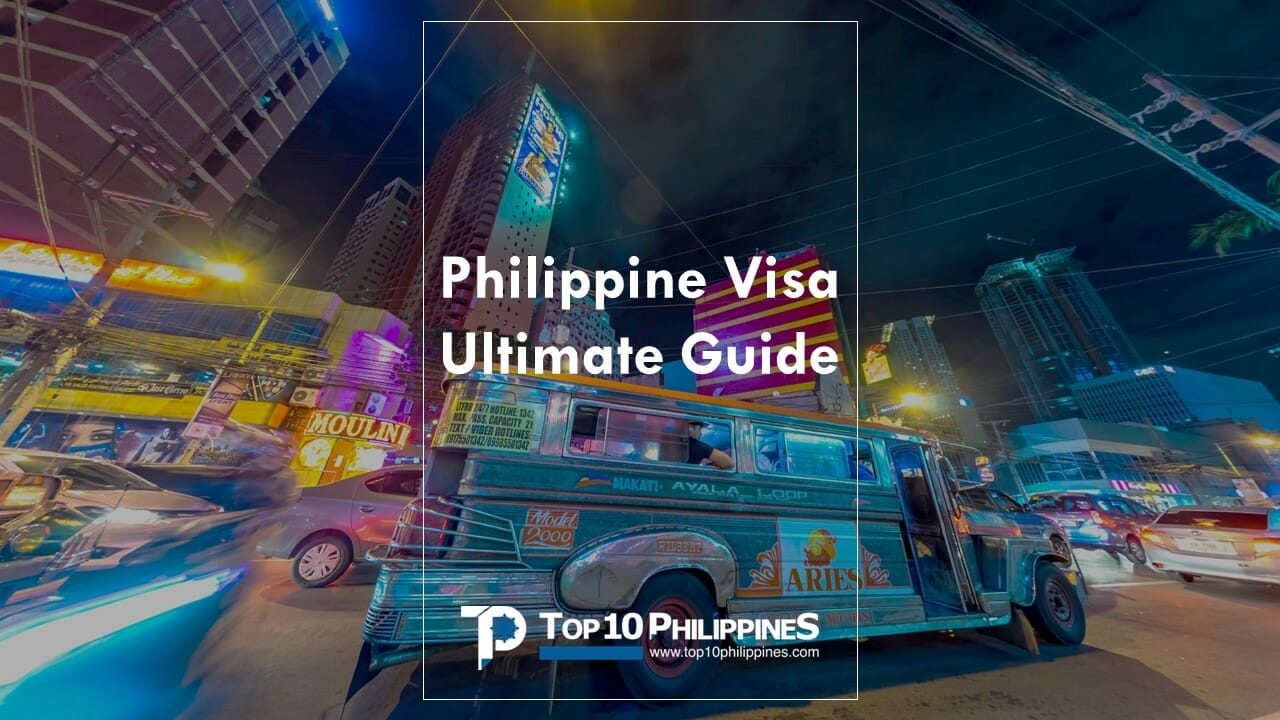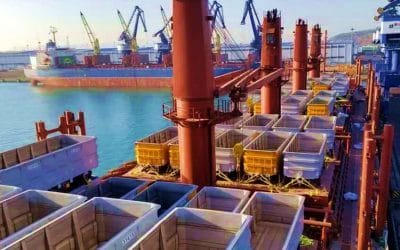Table of Contents
Are you looking to travel to the Philippines? Are you from China, India, Pakistan, Africa, the Middle East, or Central Asia and planning a business trip or leisure with your family? If so, you’ll need to obtain a visa. Here’s a step-by-step guide on how to get a Philippines visa.
The Philippines has become one of the popular places to spend the holidays and business deals. Its stunning beaches, friendly people, sumptuous food, and distinct culture make it a must-visit country. If you’re considering going on a business or pleasure in the country, you should first get a visa. As many of you might not know how to get a Philippines visa, we made this article which will walk you through the entire process.
How to Get a Philippines Visa?
Here are four simple steps on how to get a Philippines visa.
Step 1: Fill out the application form in the Philippine Visa Application Portal
The first step how to get a Philippines visa is to fill out an application form, which you can find on the Philippine Visa Application Portal website. This site was designed to help everyone secure a Philippine Tourist Visa in the fastest way possible.
You will be required to upload a recently taken picture with the passport biodata page to complete your online application. Make sure to input the correct details in every box.
Once you have entered all the required information, print it out and keep it in a folder, together with the requirements.
Step 2: Set an appointment with the Philippines embassy closest to you
Make an appointment with the nearest Philippine embassy via telephone, email, or an online appointment system.
Appointment slots run out quickly, so make sure to secure one as soon as possible.
Step 3: Submit your application and requirements to Embassy
Go to the Philippine embassy and submit your completed application form and requirements.
Submissions on behalf of minors (below 18) can be made by their parents or a legal representative.
Step 4: Wait for your visa application to be processed
The duration of processing a Philippines visa application is usually between two and ten working days.
The period depends on the particular embassy or consulate to which you apply, as well as the documents you provide. So, it’s best to always apply in advance of the time you intend to go to the Philippines.
Frequently Asked Questions About Visa Duration and Extension
How can I extend my stay in the Philippines as a foreign person with a temporary visitor’s visa?
Foreign nationals who are admitted for a 30-day stay may first apply for a visa waiver, which extends their stay in the Philippines by an extra 29 days. After that, you may submit an application for a one-month, two-month, or six-month extension at least one week before the expiration date of your visa.
Can I further extend my visa? For how long can I extend my stay in the Philippines?
According to Philippine Immigration Law, foreigners without a visa may extend their stay for up to 36 months, while those with visas may do so for up to 24 months. (Note: The timeframes must be calculated starting with the applicant’s most recent recorded arrival date).
What are the requirements for me to renew my temporary visitor visa?
Please bring your passport and a completed visa extension form (TVS-C-VE-2016) to any Bureau of Immigration office if you need to extend your visa.
Can I designate a representative to submit my visa extension on my behalf?
Yes, you can. You need to prepare a Special Power of Attorney (SPA), mentioning that you authorized a certain friend, family member, or colleague as your representative to apply for your visa extension.
How long should I give myself to fill out my visa extension to prevent overstaying?
7 days before the expiration of your temporary visitor visa. Ideally, you must submit an application for a visa extension 7 days before your visa expiration date. The 7-day period will allow the Bureau of Immigration to process your new visa extension.
Where can a foreign national apply for a Philippine visa?
There are a few different places where a foreign national can apply for a Philippine visa. The most common place to apply is at a Philippine embassy or consulate. Another option is to apply for an eVisa, which can be done online through the official website of the Bureau of Immigration.
The process for applying for a visa at an embassy or consulate is generally the same as applying for a visa in any other country. The applicant will need to fill out an application form and submit it along with any required supporting documents. These documents may include proof of travel plans, financial stability, and more.
Applying for an eVisa is a bit different. The applicant will need to create an account on the Bureau of Immigration website and complete the application form online. They will also need to upload any required supporting documents.
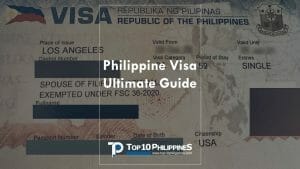
What is a Philippine visa?
A Philippine visa is a permit issued by the Philippine government that allows a foreign national to enter, stay, and work in the Philippines for a specific period of time. There are different types of visas available depending on the purpose of your visit, and each has its own requirements.
If you plan to visit the Philippines for tourism or business purposes, you will need to apply for a tourist or business visa, respectively. These visas allow you to stay in the country for 2 months, depending on your nationality. If you wish to stay longer, you can apply for an extension at a local immigration office.
If you want to live and work in the Philippines, you will need to apply for a residence visa. This type of visa allows you to stay in the country for an indefinite period of time and can be renewed every two years.
What are the types of visas?
There are two types of visas available for those wishing to travel to the Philippines – tourist and business. Tourist visas are generally valid for up to 60 days, while business visas can be valid for up to 90 days. Those planning on staying in the Philippines for longer than 60 days will need to apply for a visa extension at a local immigration office.
Here is a complete list of the Philippine embassies and consulates around the world. Simply click the link and browse the country of your origin.
Tourist Visa: Who can apply, what requirements, and where to apply
Assuming you would like a general overview of the process of applying for a tourist visa to the Philippines:
Anyone can apply for a tourist visa to the Philippines, so long as they meet the requirements. The requirements generally have a passport that is valid for at least six months from the date of your intended arrival to the Philippines, a completed visa application form, a passport-sized photo, and proof of onward travel.
Where you apply depends on your citizenship. For example, citizens of the United States can apply online through the website of the Embassy of the Philippines in Washington, D.C. The website will have a list of all the required documents as well as instructions on how to submit them.
The processing time for a tourist visa is usually about three business days, but it can take longer during busy periods.
Business Visa: Who can apply, requirements, and where to apply
The Philippine government offers several visas for business purposes, each with different requirements. The most common business visa is the Special Non-Immigrant Visa (SENI), which is valid for up to three years and allows multiple entries into the country.
To apply for a SENI visa, applicants must have an invitation from a Philippine company or organization, as well as proof of financial capability and a travel itinerary. The visa can be applied for at any Philippine embassy or consulate.
There are also other types of business visas available for shorter stays, such as the Transit Visa (TV) and the Courtesy Visa (CV). For more information on these and other types of visas, please visit the website of the Philippine embassy or consulate within your country of origin. Click here to see the complete list of Philippine diplomatic missions and embassies worldwide.
Student Visa in the Philippines: Who can apply, requirements, and where to apply
The Philippines offers a student visa for those who wish to pursue studies in the country. The requirements for a student visa include a valid passport, a letter of acceptance from a school in the Philippines, and proof of financial capability. Those who wish to apply for a student visa can do so at the nearest Philippine embassy or consulate.
Balikbayan Visa: Who can apply, requirements, and where to apply
The Philippines offers a special visa for citizens of other countries who were former Filipino citizens. This visa is called the Balikbayan Privilege visa, and it allows holders to stay in the country for up to one year and can be extended up to 6 months.
To be eligible for this visa, applicants must have a valid passport and proof of their Filipino ancestry, such as a birth certificate or naturalization papers. They must also show that they have ties to the Philippines, such as family members or property in the country. The Balikbayan Privilege visa can be obtained from any Philippine consulate or embassy.
Special Investor’s Resident Visa in the Philippines: Who can apply, requirements, and where to apply
The Philippines offers a Special Investor’s Resident Visa (SIRV) to certain foreign investors. To be eligible for this visa, the investor must have made a minimum investment of US$75,000 in a Philippine company. The investment must be in the form of equity or non-equity instruments, and it must be made within two years of the visa application.
The SIRV holder is allowed to stay in the Philippines for an indefinite period of time, and they are also entitled to certain privileges, such as multiple-entry status and exemption from travel restrictions. The holder’s spouse and children under 21 years of age are also eligible for the SIRV.
To apply for the SIRV, the investor must submit a completed application form, along with supporting documents, to the nearest Philippine embassy or consulate.
Tips for a Successful Application: What to do and what to avoid
The Philippines visa application process can be long and daunting, but there are some things you can do to make it go more smoothly.
First, be sure to fill out all the required forms completely and accurately. Incomplete or inaccurate information will only delay the process. Second, be prepared to submit all the required documentation. This includes a valid passport, proof of financial capability, and a letter of invitation from a host in the Philippines.
Third, pay close attention to the instructions on the application forms and follow them carefully. Philippine visa applications are processed manually, so any mistakes will only add to the processing time.
Finally, be patient. The entire process can take several weeks, so it’s important not to get discouraged if it takes a little longer than expected.

12 Reasons why you should visit the Philippines
The Philippines is a country located in Southeast Asia. It is made up of more than 7,000 islands, making it a popular destination for travelers. The country is known for its stunning beaches, friendly people, and delicious food. Here are 12 reasons why you should visit the Philippines:
1. The best beaches in the world. With over 7,000 islands, there are plenty of beach options to choose from. Whether you’re looking for a quiet spot to relax or want to party all night, there’s a beach for you in the Philippines.
2. The food is fantastic. From Filipino staples like adobo and lumpia to international cuisine, there’s something for everyone in the Philippines.
3. The people are incredibly friendly and welcoming. You’ll often hear the phrase “More fun in the Philippines” – and it’s true! Filipinos are known for their hospitality and positive attitude.
4. The culture is rich and unique. With a history of colonization by Japan, Spain, and the US, it s no wonder that the Philippines has such an eclectic mix of cultures.
5. It’s affordable. The Philippines has very low prices for both food and hotel accommodation, which means you can enjoy your holiday on a tight budget.
6. The business is growing. The Philippines offers a lot of potential for tourism and business growth. In 2017, they welcomed almost 5 million tourists who spent more than $5 billion.
7. It’s easy to get there. There are flights from all over the world, including direct flights from the US, Canada, and Europe.
8. The weather is great. The Philippines has a tropical climate that boasts lots of sunshine and warm temperatures all year round.
9. There’s an abundance of things to do. You can try your hand at surfing, diving, scuba diving, or even learning to play golf! There are 7,000 islands which means that you can literally do 7,000 things in the country.
10. It’s a safe country. The Philippines is considered one of the safest countries in the world. In fact, it has one of the lowest crime rates out of all Southeast Asian countries.
11. Great education system. The universities and colleges are of a very high standard and are affordable for students from the US, Europe, and other countries. The only country in Asia where 90% of the people speak English, which is great for tourists.
12. Medical tourism. It’s also home to some of the best medical facilities and western-educated doctors in Asia. The prices of medical facilities are more affordable compared to South Korea, Thailand, Australia, or Dubai-UAE.

Which countries require to get a Philippine visa?
Here is a list of countries that require to get a visa to enter the Philippines.
- Afghanistan
- Albania
- Algeria
- Armenia
- Azerbaijan
- Bangladesh
- Belarus
- Bosnia and Herzegovina
- China
- Cuba
- Egypt
- Georgia
- India
- Iran
- Iraq
- Jordan
- Kosovo
- Lebanon
- Libya
- Moldova
- Montenegro
- Nauru
- Nigeria
- North Korea
- North Macedonia
- Pakistan
- Palestine
- Sierra Leone
- Serbia
- Somalia
- South Sudan
- Sri Lanka
- Sudan
- Syria
- Taiwan
- Timor-Leste
- Tonga
- Ukraine
- Yemen
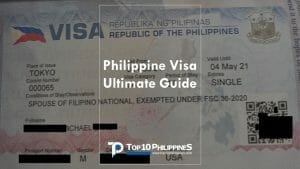
Which countries are exempted from a Philippine visa
Nationals of the countries below may enter the Philippines without a visa and can stay for up to 30 days, provided they have tickets that guarantee their return to the port of origin or the port of their next destination and that their passports will remain valid for at least 6 months after the anticipated length of stay.
Nationals of the following nations below may enter the Philippines without a visa:
- Andorra
- Angola
- Antigua and Barbuda
- Argentina
- Australia
- Austria
- Bahamas
- Bahrain
- Barbados
- Belgium
- Belize
- Benin
- Bhutan
- Bolivia
- Botswana
- Brazil (up to 59 days stay)
- Brunei Darussalam
- Bulgaria
- Burkina Faso
- Burundi
- Cambodia
- Cameroon
- Canada
- Cape Verde
- Central African Republic
- Chad
- Chile
- Colombia
- Comoros
- Congo
- Costa Rica
- Cote d’Ivoire
- Croatia
- Cyprus
- Czech Republic
- Democratic Republic of the Congo
- Denmark
- Djibouti
- Dominica
- Dominican Republic
- Ecuador
- El Salvador
- Equatorial Guinea
- Eritrea
- Estonia
- Ethiopia
- Fiji
- Finland
- France
- Gabon
- Gambia
- Germany
- Ghana
- Greece
- Grenada
- Guatemala
- Guinea
- Guinea Bissau
- Guyana
- Haiti
- Honduras
- Hungary
- Iceland
- Indonesia
- Ireland
- Israel (up to 59 days stay)
- Italy
- Jamaica
- Japan
- Kazakhstan
- Kenya
- Kiribati
- Kuwait
- Kyrgyzstan
- Lao People’s Democratic Republic
- Latvia
- Lesotho
- Liberia
- Liechtenstein
- Lithuania
- Luxembourg
- Madagascar
- Malawi
- Malaysia
- Maldives
- Mali
- Malta
- Marshall Islands
- Mauritania
- Mauritius
- Mexico
- Micronesia
- Monaco
- Mongolia
- Morocco
- Mozambique
- Myanmar
- Namibia
- Nepal
- Netherlands
- New Zealand
- Nicaragua
- Niger
- Norway
- Oman
- Palau
- Panama
- Papua New Guinea
- Paraguay
- Peru
- Poland
- Portugal
- Qatar
- Republic of Korea
- Romania
- Russia
- Rwanda
- Saint Kitts and Nevis
- Saint Lucia
- Saint Vincent and the Grenadines
- Samoa
- San Marino
- Sao Tome and Principe
- Saudi Arabia
- Senegal
- Seychelles
- Singapore
- Slovak Republic
- Slovenia
- Solomon Islands
- South Africa
- Spain
- Suriname
- Swaziland
- Sweden
- Switzerland
- Tajikistan
- Thailand
- Togo
- Trinidad and Tobago
- Tunisia
- Turkey
- Turkmenistan
- Tuvalu
- Uganda
- United Arab Emirates
- United Kingdom of Great Britain and Northern Ireland
- United Republic of Tanzania
- United States of America
- Uruguay
- Uzbekistan
- Vanuatu
- Vatican
- Venezuela
- Vietnam
- Zambia
- Zimbabwe
If you plan on staying longer than that, you will need to apply for a different type of visa.
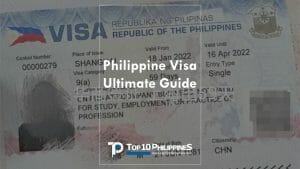
Conclusion: How to Get a Philippines Visa
In conclusion, getting a Philippines visa is a relatively easy process that can be completed in a few steps. First, gather the required documents. Second, submit the application online or in person. Lastly, pay the visa fee. After following these steps, you should receive your Philippines visa in a timely manner.
Once your application is approved, you will receive your visa and can begin planning your trip to the Philippines.

